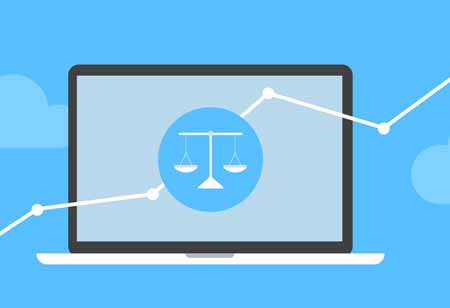THANK YOU FOR SUBSCRIBING
Best Strategies to Handle Tech Trends in Legal Field
Law firms cannot sit on their hands and ignore technology; they must discover methods to employ relevant technology and be aware of the technology that may be useful

By
Apac CIOOutlook | Friday, September 24, 2021
Stay ahead of the industry with exclusive feature stories on the top companies, expert insights and the latest news delivered straight to your inbox. Subscribe today.
Law firms cannot sit on their hands and ignore technology; they must discover methods to employ relevant technology and be aware of the technology that may be useful.
FREMONT, CA: Most lawyers are now well aware of the dangers of rushing into video conferencing and the drawbacks of depending too much on in-person networking for new business. The epidemic emphasized that. Law businesses wish to discover methods to embrace technology before it becomes a requirement, as the industry evolves to realign with new customer expectations that value ease and immediacy.
Despite some of the early benefits of legal technology adoption, most law firms proceed with caution.The key is finding easy ways to keep up with trends and leverage technology while avoiding additional dependencies or unanticipated difficulties. Verifying compliance, enhancing procedures and filling gaps, and outsourcing processes to legal vendors are three best practices for law firms to incorporate tech trends into their practices proactively.
Verifying Data Security and Compliance
Firms should work with their general counsel and IT teams when researching new technology, systems, or procedures to ensure that new applications are compliant and secure. As a result of the digital age's opening of the door to information, data is alarmingly easy to get. Users are becoming more aware of the risks associated with digital data, and governments are responding. Data security rules apply to anybody who uses a company's services, regardless of where they use them, including the website.
Augmenting Processes New Technology
Finding methods to fit new tools into a current process, rather than rewriting the entire process, is one approach to be smart with new technology installations. The technique appears simple enough, yet it necessitates an exploratory mentality and a keen eye for detail. Legal experts can assess their system's procedures and identify areas where technology could take control. Data connections across systems eliminate the need for a human to enter data repeatedly, freeing up time and resources for client-related activities.
Outsourcing to Vendors
The third approach to properly embrace digital developments is to outsource strategically. A legal firm's primary goal is to provide timely assistance and services to a client. Other businesses can specialize and experiment without utilizing a substantial proportion of a legal firm's resources. Legal service providers specialize in a specific field of law so that other legal professionals can give services to their clients without having to devote a whole team or firm's resources to it.





